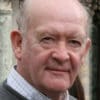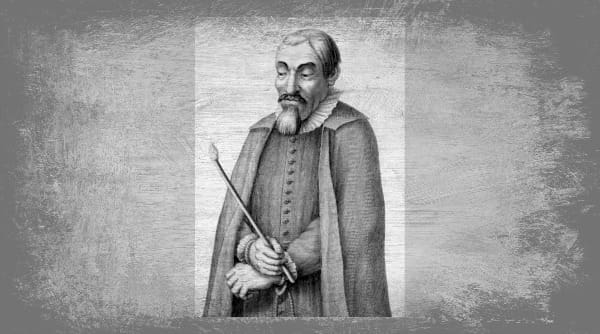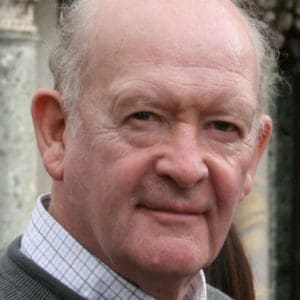Editor’s Note: David Torkington continues his series with a segue into the history of Christian Mystical Tradition, looking now at the ravages of the Quietist heresy. To read part 34, see here. To begin with part 1, see here.
Molinos, the founder of Quietism, was a 17th-century Spanish priest stationed in Rome. From there, he presided over the heresy that has deeply undermined authentic mystical theology down to the present day. It has had devastating consequences for the Church that simply cannot be exaggerated. Molino’s heresy was called Quietism because it seemed to encourage a person to do nothing in prayer, but remain quiet before God. Here, he or she appeared to do nothing but wait on God’s action in total silence. Quietism in all its different manifestations seemed to encourage the reformer’s belief that our own efforts are useless and even blasphemous. Everything depends, not on what we do, but only and exclusively on the grace of God alone. It was Quietism that gradually undermined authentic mystical theology and the role of the mystic within the Church.
Quietism Undermines Authentic Contemplation
Its adherents were not only encouraged to do absolutely nothing in prayer, but to do nothing about temptations either, including sexual temptations that could only be overcome with God’s grace. While awaiting this grace they had to be endured, or, as it was shown at the court where Molinos was condemned, they were enjoyed on a grand scale. The moral textbooks insisted that with sexual sin there was no ‘parvity of matter’. In other words, all sexual sins were mortal sins, great or small. No wonder Molinos was given a life sentence when Quietism was condemned in 1687, and no wonder that after the trial, gangs of anti-mystical witch-hunters panned out all over Christendom to destroy any form of prayer that had the slightest whiff of Quietism about them.
Forms of prayer like the Exercises of St. Ignatius were acceptable because they involved mental activity, but any form of prayer that encouraged inner recollection or quiet were condemned. Even St. Teresa of Avila and St. John of the Cross came under suspicion, and henceforth their works could only be found covered with dust on the top shelves of clerical libraries.
As a result of the Church’s zeal in crushing this heresy and in promoting the Gospel of good works, for fear that Catholics would fall into Protestantism, mystical prayer simply fell into abeyance. The enormity of this and its consequences down to the present day is beyond calculation. In his monumental History of the Church Monsignor Philip Hughes states:
‘The most mischievous feature of Quietism was the suspicion that it threw on the contemplative life as a whole. At the moment when, more than at any other, the Church needed the strength that only the life of contemplation can give, it was the tragedy of history that this life shrank to very small proportions, and religion, even for holy souls, too often took on the appearance of being no more than a divinely aided effort towards moral perfection.’
This moral perfection not only included the moral teaching of the Gospels but the moral teaching of stoicism that had seeped into Christianity in the third and fourth centuries and again at the Renaissance. Monsignor Ronald Knox makes it quite clear that in the century leading up to the condemnation of Quietism, mystical theology was taught and practiced more than at any other time before. Moral theology was taught in seminaries, in religious houses and universities side by side with the mystical theology without which nobody could practice the high moral standards demanded by the Gospels. After Quietism, virtually any form of prayer that could be classified as mystical was suppressed. Quietism was not only leading people into Protestantism but into the continual practice of serious sexual sins.
The Anti-Mystical Witch-Hunts
The devastating attacks on mystical theology set in immediately after the condemnation of Quietism. The anti-mystical witch-hunters first turned their attention to the powerhouses of prayer and the spiritual life: the monasteries, the friaries, the religious houses, convents of every type, seminaries, schools and places of study of every sort, not least the Catholic universities. Any sort of prayer that taught people how to be still and quiet, how to remain recollected and remain quietly open and docile to the Holy Spirit had to be stamped out. In outlawing authentic mystical theology, the anti-mystical witch-hunts also gradually undermined and finally outlawed the spiritual directors who used to lead those who had come to the end of their first fervor into contemplation.
The Exercises of St. Ignatius survived the onslaught because they were considered safe, first because they always involved the use of the inner faculties of the mind, the reason, the imagination, and the memory. Secondly, when they did reach one of their main objectives, which was to galvanize someone with a nominal or lukewarm faith into a vibrant and heartfelt faith, there was no teaching in the Exercises to lead them on and into the mystic way, but rather into the apostolic way.
John Colet and Moral Education
At the beginning of the sixteenth century, there was an extremely erudite priest called John Colet. He was the son of the Lord Mayor of London who used his wealth to support good friends like Erasmus, who like him were busily employed trying to reconcile and promote the spirit of the Renaissance with Christianity. He was brought up on the spirituality of the Devotio Moderna, but when he visited Italy he not only fell in love with the glories of the Renaissance but with the teachings of Socrates and his descendants, the Stoics. He returned to England full of enthusiasm to share his ideas with his peers and with the younger generation, founding St. Paul’s school in London. The perfect product of this school would be embodied in a true English gentleman in whom the teachings of Socrates and Christ would be perfectly harmonized. The other eight major public schools modeled themselves on St Paul’s and the grammar schools followed suit. Later, public schools that arose to accommodate the sons of the nouveau riche who were born of the industrial revolution and the exploitations of empire, modeled themselves in their turn on the ‘big nine’. The same aims and ideals would eventually be found in more diluted forms in the secondary and comprehensive schools of the twentieth century, including Catholic schools. Thanks to John Colet, the inner moral teaching of the Renaissance was merged with the Christian ethic to become the heart and the soul of the English character.
Shadows of Old Heresies
While for some religious, the use of the Scriptures could lead them on to contemplation, this would not be possible in the same way for the laity who were warned to steer clear of them for fear they may do for Catholics what they did for Protestants. Nor should they be consumed by the sort of spirituality that saw Christ as Jesus, their personal savior, in the way the Protestants saw him.
Gradually a change began to take place in Catholic spirituality re-introducing, albeit in a diluted form, some of the heresies that rampaged in the fourth and subsequent centuries. Even though devotions such as that to the Sacred Heart helped the laity to keep Jesus at the center of their spirituality, the first witch-hunters did not like too much emphasis on the humanity of Christ. For example, calling Christ, “Jesus”, too often as the protestants did, could sound a little too close to denying his divinity. And so in subsequent centuries down to the present, a sort of Semi-Arianism prevailed that never denied the divinity of Christ but which never properly emphasized his humanity either.
Inevitably a type of Macedonianism returned. It was a sort of semi-Macedonianism that did not deny the divinity of the love of Christ, the Holy Spirit, but it took little, if any, obvious part in the personal spirituality of the laity. I remember in the 1960’s searching for a book to read on the Holy Spirit. Sadly I would find only two. The first was called The Unknown God, the second was called The Forgotten Paraclete. This was of course before the advent of Charismatic Renewal.
Without the Holy Spirit at the center of the spirituality that prevailed after the condemnation of Quietism, men and women were once more left to themselves and the old heresy of Pelagianism, or more precisely Semi-Pelagianism, reared its ugly head once more. And to make matters worse, the influence of Jansenism, a sort of Catholic Calvinism, reintroduced a type of Manicheism that was so rampant in the middle ages, with ascetical practices that included painful corporal forms of mortification never taught by Christ and his first followers.
A Brief Summary
St. Bernard and St. Francis brought back Jesus as the heart and center of Catholic theology and spirituality. St. Bernadine and his followers would paint the monogram of his Holy Name on homes, in churches and on public buildings where they can still be seen to this day. Devotion to the person of Jesus was taught everywhere. It was central to the teaching of the spirituality of the Devotio Moderna as can still be seen in the work of its greatest propagator Thomas a Kempis in his famous book, The Imitation of Christ.
It was because this spirituality was centered on the person of Christ, and on coming to know and love him, that the pathway back through meditation to contemplation that only seemed to be open to the few in ‘the Dark Ages’, was once more open to all. In the aftermath of Quietism, however, contemplation soon reverted to be seen as the extraordinary way for ‘a few chosen souls’. It is the purpose of this course to return once more to the profound mystical spirituality given to us by Jesus himself in which contemplation in, with and through him is the only way back to the place where God first conceived us.
Image of Miguel de Molinos, Wikimedia Commons




